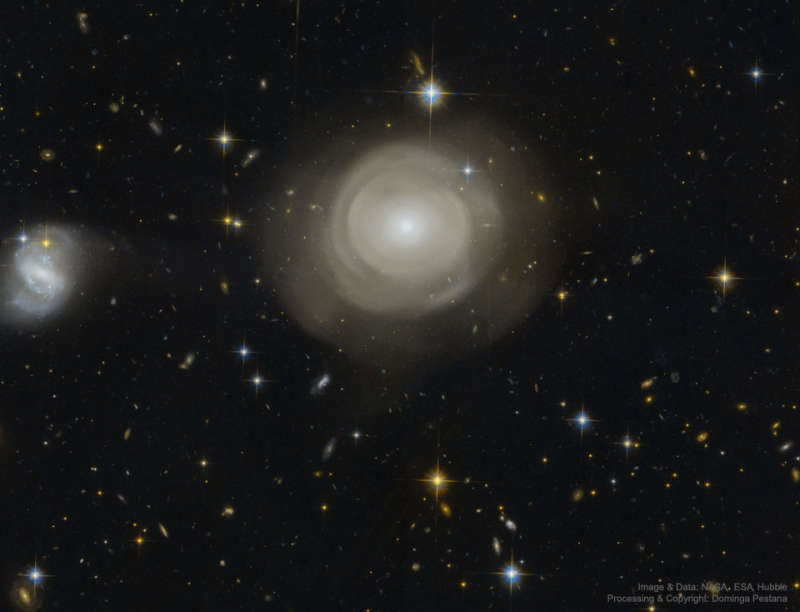Shells of Stars in Elliptical Galaxy PGC 42871

Explanation:
How do galaxies grow?
To help find out, the
Hubble Space Telescope was deployed to image the unusual
elliptical galaxy
PGC 42871.
How this galaxy came to be surrounded by
numerous shells of stars
may give clues about how it evolved.
Embedded in the
diffuse shells are massive
globular clusters of stars --
stars which analyses show were born during three different epochs.
This and other
data indicate that
PGC 42871 has been in at least two
galactic collisions,
at least one of which might have been with a former
spiral galaxy.
The remaining spiral galaxy on the far left is at the same distance as
PGC 42871 and may have been involved in some of the collisions.
PGC 42871 spans about 20 thousand
light years and lies about 270 million light years away
toward
the constellation of
Centaurus.
Open Science:
Browse 1,800+ codes in the Astrophysics Source Code Library
Authors & editors:
Robert Nemiroff
(MTU) &
Jerry Bonnell
(USRA)
NASA Web Site Statements, Warnings,
and Disclaimers
NASA Official: Jay Norris.
Specific
rights apply.
A service of:
LHEA at
NASA /
GSFC
& Michigan Tech. U.

